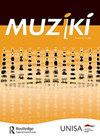Ojú l’ọ̀rọ̀ọ́ wà: The Praise Gaze in Oríkì Performance
IF 0.8
0 MUSIC
引用次数: 0
Abstract
Abstract Living traditions of praise-singing are found throughout sub-Saharan Africa, bridging orality, literacy, digital media and the internet. The transcribed text has been the primary focus of scholarship on African oral traditions. Because of the growing number of digital audiovisual recordings available on streaming and social media platforms, it is possible to analyse more modalities of praise-singing. Along with fieldwork observations, this article reports on a multimodal analysis that was applied to music videos and field recordings to study the role of gaze in oríkì, or praise poetry, a cultural phenomenon amongst Yorùbá speakers of West Africa. The Yorùbá proverb “Ojù l’òṛ òó ̣ wà” suggests that “the meaning of the words is in the eyes of the speaker”. Although scholars have addressed the visual imagery included in oríkì texts, to date, no scholar has made gaze the focus of a research study on praise-singing performance practice. To theorise the praise gaze, the analysis drew on a small but growing body of psychological literature on gaze in Western music (and Indian classical music) and, also, participant-observation. Research has shown that the direction of the performer's head, face and eyes plays a role in the reception of Western concert music. However, in praise-singing traditions, such as oríkì, gaze plays a more important role where the singer looking at the addressee identifies the focal point for the audience. If the addressee returns the gaze, forming a mutual gaze, this is likely to increase the “head-swelling” effect of the praise. These preliminary findings on the topic of gaze in praise-singing, specifically Yorùbá oríkì, are intended to be a basis for further research on a central aspect of performance practice in sub-Saharan Africa. It is expected that as research on this topic expands, variation and nuance in the gaze modality will be revealed.舞曲:奥表演中的赞美凝视
撒哈拉以南非洲到处都有赞美歌唱的生活传统,连接了口语、识字、数字媒体和互联网。转录的文本一直是研究非洲口头传统的主要焦点。由于流媒体和社交媒体平台上提供的数字视听记录越来越多,因此有可能分析更多的赞美歌曲形式。除了实地观察外,本文还报道了一种多模态分析,该分析应用于音乐视频和现场录音,以研究凝视在或íkì或赞美诗中的作用,这是西非约鲁巴语使用者中的一种文化现象。约鲁巴谚语“Ojúl'åṛåọ́; wà”表明“单词的含义在说话者的眼中”。尽管学者们已经讨论了oríkì文本中包含的视觉意象,但迄今为止,没有学者将凝视作为赞美歌唱表演实践研究的重点。为了对赞美凝视进行理论化,该分析借鉴了西方音乐(和印度古典音乐)中关于凝视的少量但不断增长的心理学文献,以及参与者的观察。研究表明,演奏者的头部、面部和眼睛的方向在接受西方音乐会音乐方面发挥着作用。然而,在赞美歌唱传统中,如oríkì,凝视扮演着更重要的角色,歌手看着收件人,确定观众的焦点。如果收件人回望,形成相互凝视,这很可能会增加赞美的“膨胀头”效应。这些关于赞美歌中凝视主题的初步发现,特别是Yorúbáoríkì,旨在为进一步研究撒哈拉以南非洲表演实践的一个核心方面奠定基础。随着对这一主题的研究的扩展,凝视模式的变化和细微差别将被揭示。
本文章由计算机程序翻译,如有差异,请以英文原文为准。
求助全文
约1分钟内获得全文
求助全文

 求助内容:
求助内容: 应助结果提醒方式:
应助结果提醒方式:


